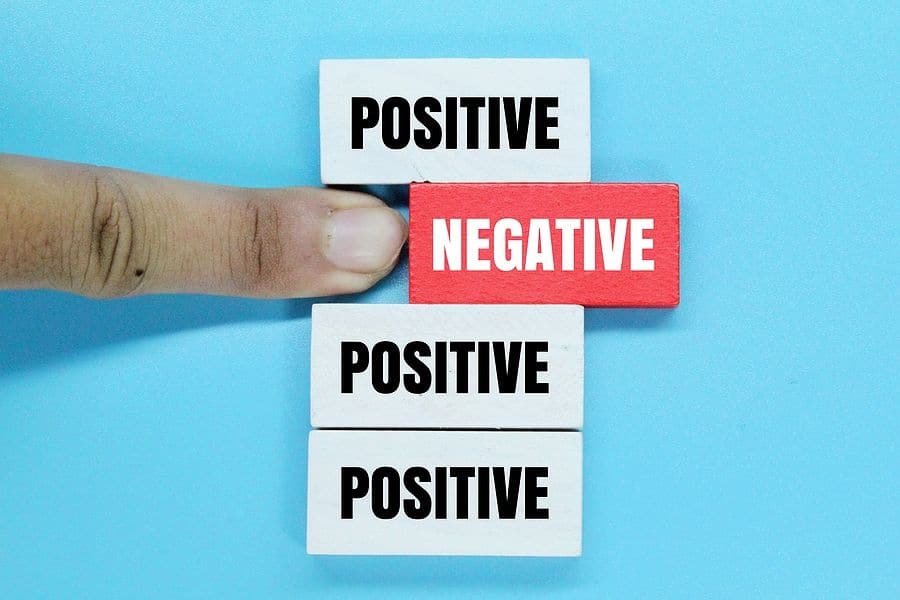The increased online-based presence of businesses means that online reviews, too, are a large part of growing a brand.
Now more than ever, consumers rely on online reviews to decide if they are going to become a customer of a particular business, which is why it is imperative to not only get positive reviews from your customers but also address negative reviews.

Just how much impact do negative reviews have on your business?
BrightLocal has revealed even way back in 2017 that Local Consumer Review Survey statistics show 93% of local consumers read reviews before making a shopping decision. And with regards to negative reviews:
- 94% of customers avoid a business that has a bad review*
- 53% of customers prefer that businesses respond to negative reviews within a week*
- 45% of customers are more likely to visit a business if they respond to negative reviews*
By those statistics alone, you can gauge the impact of negative reviews, and importantly, why they should be addressed quickly and properly.
The fact of the matter is, how you answer negative reviews matters as much as getting to them in a timely fashion.
Best line of defence against negative reviews: answering them!
In general, it is best practice to answer all reviews, both good and bad.
If the review is good, thank them; if the review is neutral it’s a great way to highlight the more positive aspect of the message.
For example, if a review commends the service but critiques a particular dish, reply on a tilt in regards to how your business values service, and that you are glad the customer was happy with the service they received.
Dealing with negative reviews is a little trickier, and therefore must be carefully managed.
The number one tip we can share is to never ignore negative reviews; address them with sensitivity and understanding, because how you reply to negative feedback will also reflect on your business as much as the negative review itself.
How to answer negative feedback
Part of why it is hard to reply to negative reviews is because it is upsetting, especially during times where you may feel like the negative review is unreasonable, which unfortunately can happen sometimes.
But at times like these, it is important to keep your cool and not take it personally. The goal here is to think about your business, and how to recover.
Take ten if you need to before crafting a response.
Now, it’s time to turn it around. Reply professionally and with a tone that puts the customer first, regardless of whether the negative review was merited or not.
Here are some great pointers to start with as you craft your response:
- Do not reply negatively to a negative review. Don’t add fuel to the fire. It is categorically a bad look for your business and can turn off other potential customers who might read it as well.
- Do not delete or block negative reviews. This has a way of coming out and backfiring on you eventually.
- Answer respectfully and gracefully but keep to the point. Avoid rambling.
- Structure your response from a customer-serving point of view and how to make things better the next time.
- When truly in the wrong, it is good to respond by:
- Saying you are on top of the situation and are investigating the matter. It is always good to let the customer know that you are already taking action, not just about to take action.
- Saying the company will be in touch soon to assist with the problem.
- Offering a discount or voucher for next time.
- Do not be defensive or overly apologetic. Be polite, but keep it short.
- Try to ensure the number of positive feedback eclipses the negative ones.
Overall, answering negative reviews is an art that hinges on personalised answers, quick, short but concise responses, and owning up to mistakes without over-apologising.
To elaborate, here is some guidance on how to answer negative reviews.
Always personalise your responses
Wherever possible, ensure your response is personalised to the customer and the specific issue they are raising. In many cases, a reviewer will use their real name, so be sure to use their name where possible, avoiding the generic “Dear customer”.
There is nothing more insulting than feeling like your concerns are being handled by a bot, where you’re met with an auto-response that appears on every other review, too.
While bigger companies understandably have a more systematic approach, smaller, local businesses do better when personally responding to negative reviews with a more hands-on approach whenever possible. Start with addressing the person by their name.
Always start by saying “Thank You”
Yes, even to negative reviews!
For unsavoury reviews in particular, saying Thank You shows authentic gratitude to your customer for bringing an issue to attention so that it can be investigated and solved immediately.
Additionally, it shows potential customers reading your reviews that you truly value feedback and will work hard to improve any problems.
Never be afraid to apologise
Saying sorry can go a long way. Being defensive and not owning up to error can yield a worse result than owning up to the issue and offering a sincere apology.
Along with saying thank you, it is always good to say that you are sorry in response to a negative review.
Saying sorry means you are not too proud to own up to errors. Leave your ego at the door and offer a genuine apology.
It is also important to take action and take responsibility.
Just as negative reviews can tarnish your reputation, not taking action, refusing to rectify your mistakes, or simply ignoring the issue can make things worse.
Don’t make excuses or do any finger-pointing; just move straight to correcting the mistake after apologising.
Follow up and follow-through
One of the best ways to deal with a negative response right off the bat is by telling the customer that you would like to contact them to work out the issue.
This way, further details and communications of how the issue is dealt with are not online for everyone to see. It appears neater and more professional as well. It also speaks to personalisation where you attend to your customer’s problem one-on-one.
There might be instances when there is nothing you can do to fix the issue.
While that may be the case, you can still make amends in other ways. Apologise and offer incentives for customers to give your business a second chance such as free service, a discount, or a credit.
This can be an effective way to repair lost trust with your business.
A positive resolution may even encourage your customer to revisit their review and make an amendment to explain that the issue was handled promptly and professionally offline.

Want more reviews?
Any kind of business can benefit from positive reviews. Not only do they speak volumes for future customers exploring your services or products, but they can also contribute to improved SEO.
If you’d like to try to get more positive reviews or are looking for some help managing negative reviews in a timely and professional manner, speak to iformat today.
We offer a Reputation Management system designed to target your best customers and encourage them to leave a favourable review. We also reply to all reviews, good or bad, to uphold your reputation in your community.
Contact us to learn more about our Reputation Management program.